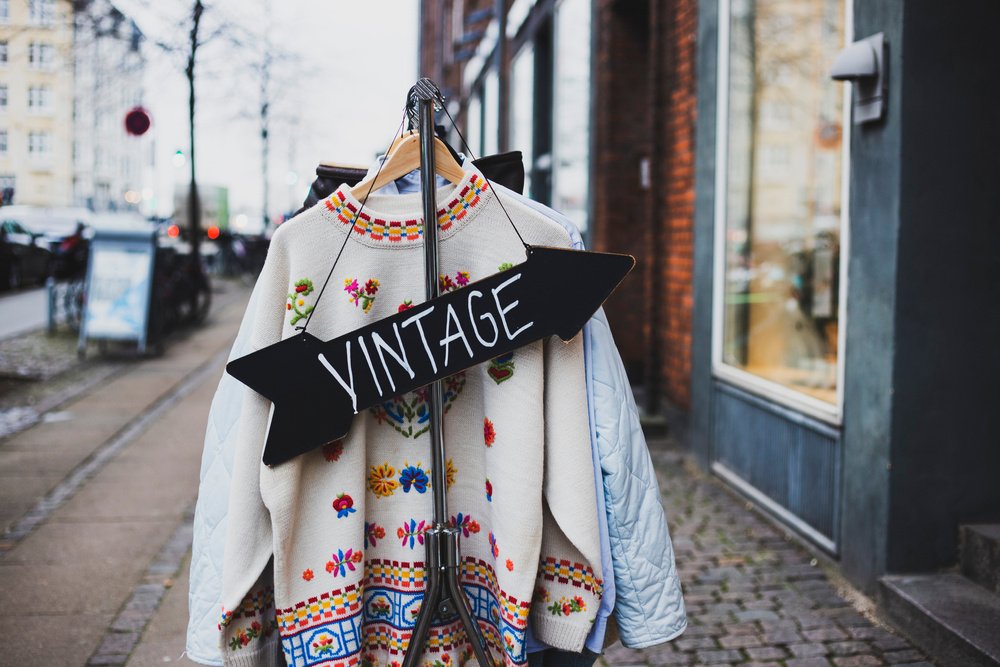In recent years, vintage fashion has surged in popularity, capturing the hearts of fashion enthusiasts and sustainability advocates alike.
The charm of unique, timeless pieces and the environmental benefits of recycling and reusing make vintage clothing a compelling choice. If you’re new to vintage fashion, this guide will help you navigate the basics, from understanding what qualifies as vintage to tips on sourcing and styling your finds.
What is Vintage Clothing?
Vintage clothing refers to garments and accessories created in a previous era, typically 20 years or more. These pieces are often characterized by their high-quality materials, distinctive styles, and unique details not commonly found in modern mass-produced clothing. Vintage fashion spans various decades, each with its signature looks and trends.
Key Decades in Vintage Fashion
- 1920s: The Roaring Twenties were marked by flapper dresses, cloche hats, and beaded embellishments.
- 1930s and 1940s: These decades featured tailored suits, tea dresses, and elegant evening wear, often reflecting the wartime austerity.
- 1950s: The post-war era brought about full skirts, cinched waists, and rockabilly styles.
- 1960s: This decade saw the rise of mod fashion, with mini skirts, bold prints, and psychedelic colors.
- 1970s: Bohemian and disco styles reigned, characterized by flowing maxi dresses, bell-bottoms, and vibrant patterns.
- 1980s: The ’80s were all about bold silhouettes, power suits, and eclectic fashion statements.
Why Choose Vintage Clothing?
Unique Style
One of the main attractions of vintage clothing is the opportunity to create a unique wardrobe. Vintage pieces are often one-of-a-kind or produced in limited quantities, ensuring that your style stands out from the crowd.
Quality and Craftsmanship
Many vintage garments were made with superior craftsmanship and high-quality materials that can endure time. This contrasts with today’s fast fashion industry, which prioritizes quantity over quality.
Sustainability
By choosing vintage, you’re contributing to a more sustainable fashion industry. Recycling clothes reduces waste and the demand for new resources, helping to mitigate the environmental impact of fashion production.
How to Start Your Vintage Collection
Identify Your Style
Before you start shopping, take some time to identify the styles and eras that resonate with you. Do you love the glamour of the 1950s or the free-spirited vibe of the 1970s? Understanding your preferences will help you make more intentional choices.
Research and Educate Yourself
Learning about different fashion eras, designers, and trends will enhance your vintage shopping experience. Numerous online resources, books, and documentaries delve into the history of fashion and iconic styles.
Start Small
If you’re new to vintage shopping, start with accessories like jewelry, scarves, and handbags. These items are often more affordable and easier to integrate into your existing wardrobe.
Where to Find Vintage Clothing
Thrift Stores
Local thrift stores are treasure troves for vintage fashion. It may take patience and digging, but you can find incredible pieces at affordable prices.
Vintage Boutiques
Specialty vintage shops curate collections of high-quality, authentic vintage clothing. While prices may be higher than thrift stores, the curated selection can save you time and ensure authenticity.
Online Marketplaces
Websites like Etsy, eBay, and Depop offer a wide range of vintage clothing from sellers around the world. Be sure to read descriptions carefully and verify the authenticity of items before purchasing.
Estate Sales and Flea Markets
Estate sales and flea markets are excellent places to find unique vintage pieces. Arrive early for the best selection and don’t be afraid to negotiate prices.
Tips for Buying Vintage
Check for Authenticity
To ensure you’re buying genuine vintage, check for signs like old-fashioned labels, unique stitching, and materials that are not commonly used today. Researching brands and understanding how to spot reproductions can also be helpful.
Inspect for Damage
Vintage clothing often comes with some wear and tear. Inspect garments for stains, holes, and other damage. Minor issues like loose buttons or small tears can often be repaired, but significant damage might not be worth the investment.
Fit and Alterations
Sizing standards have changed over the decades, so don’t rely solely on the size label. Try items on whenever possible and be open to alterations. A good tailor can transform a piece to fit you perfectly.
Styling Vintage Clothing
Mix and Match
Blend vintage pieces with modern items to create a balanced look. Pair a vintage blouse with contemporary jeans or a vintage skirt with a modern top to keep your style fresh and relevant.
Embrace the Era
Alternatively, you can fully embrace a particular era by creating head-to-toe vintage looks. This can be a fun way to pay homage to your favorite fashion decade.
Accessorize
Accessories can elevate any outfit. Vintage hats, jewelry, and bags can add a unique touch to your ensemble and help tie together your look.
Conclusion
Diving into the world of vintage clothing can be an exciting and rewarding journey. By understanding the history, knowing where to shop, and learning how to style your finds, you can create a wardrobe that is not only unique and stylish but also sustainable and timeless. Happy hunting!





